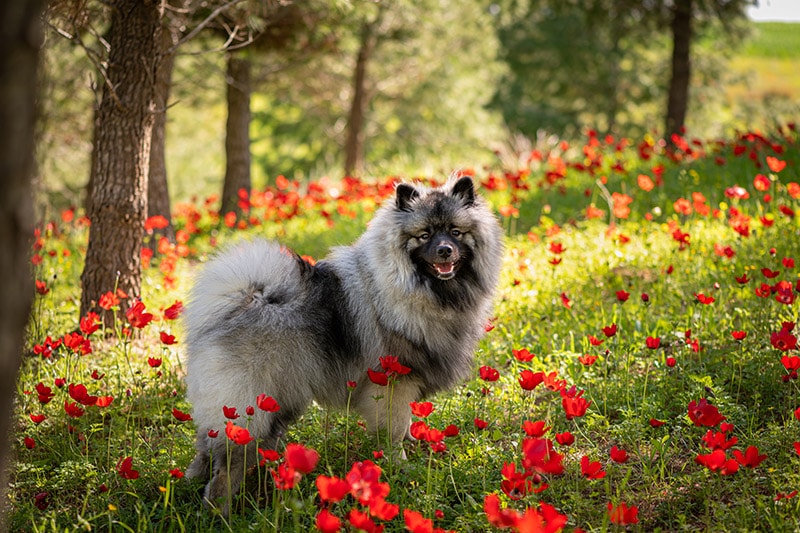Are Goldendoodles Good With Cats? Risks & Introduction Tips

Updated on
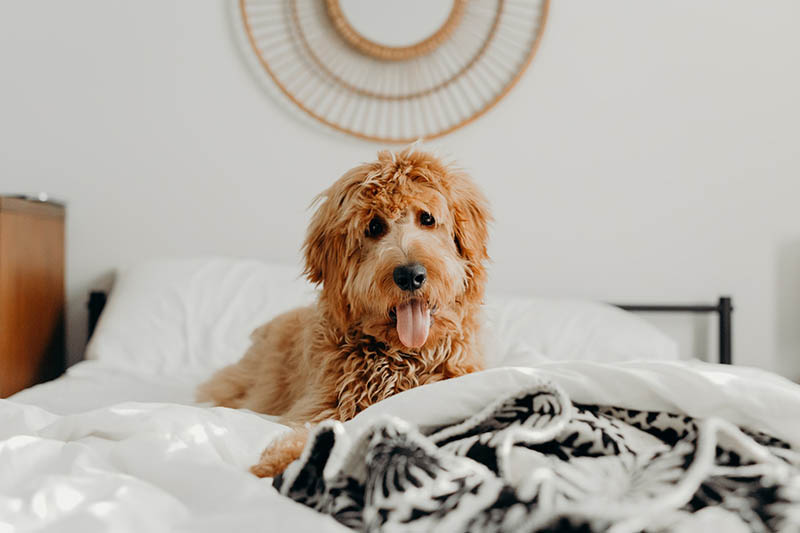
If you’re considering adding a Goldendoodle to your family, but you’re concerned about how they’ll get along with your feline friend, then you’ve come to the right place. In this article, we’ll discuss the characteristics of Goldendoodles and provide useful tips for introducing a Goldendoodle to a home with cats. In general, Goldendoodles are good with cats due to their friendly temperament. By the end, you’ll have a clear understanding of whether bringing a Goldendoodle into a home with a cat, or vice versa, is the right choice for your household. So, let’s dive in!
Goldendoodles & Cats: A Comparative Overview
When considering Goldendoodles and cats as pets, it’s important to understand their similarities and differences to ensure a harmonious household. Here, we’ll provide a comparative overview of their appearances, temperaments, personalities, and exercise requirements.
Appearance and Size
Goldendoodles come in various sizes, depending on the Poodle parent, and can range from toy to miniature to standard. Their coats are typically low-shedding and hypoallergenic, with colors varying from cream to black and everything in between.
Cats also vary in size and coat types, with over 70 recognized breeds offering a wide array of colors and patterns. Their coats can be short, long, or even hairless, depending on the breed.
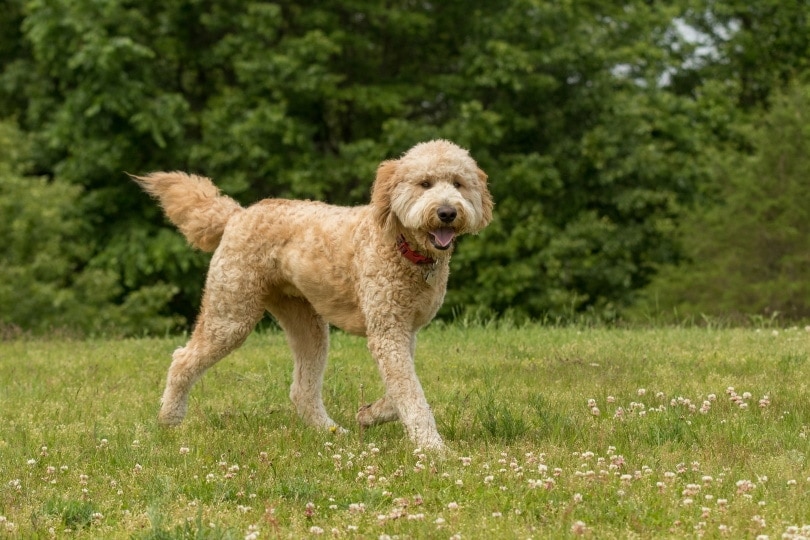
Temperament and Personality
Goldendoodles are known for their friendly, intelligent, and affectionate nature. They’re highly adaptable and can thrive in different living situations. These dogs are excellent with children and other pets, making them a well-rounded addition to any family.
Cats, on the other hand, tend to be more independent and curious. While they can be affectionate and playful, they may also appreciate their alone time. Cats typically form strong bonds with their owners but often interact on their terms, unlike the consistently enthusiastic Goldendoodle.
Despite these differences, both animals can be very playful and enjoy engaging in interactive games with their owners. They generally display low aggression levels, which is essential when introducing a new pet to your household.
Exercise and Enrichment
Goldendoodles are energetic dogs that require regular exercise and mental stimulation. They enjoy walks, runs, playtime, and respond well to positive reinforcement training techniques.
Cats, while not as high-energy as Goldendoodles, still require mental and physical stimulation to stay healthy and happy. Providing a variety of toys, scratching posts, and climbing opportunities, along with regular play sessions with their owners, can help keep them entertained and engaged.
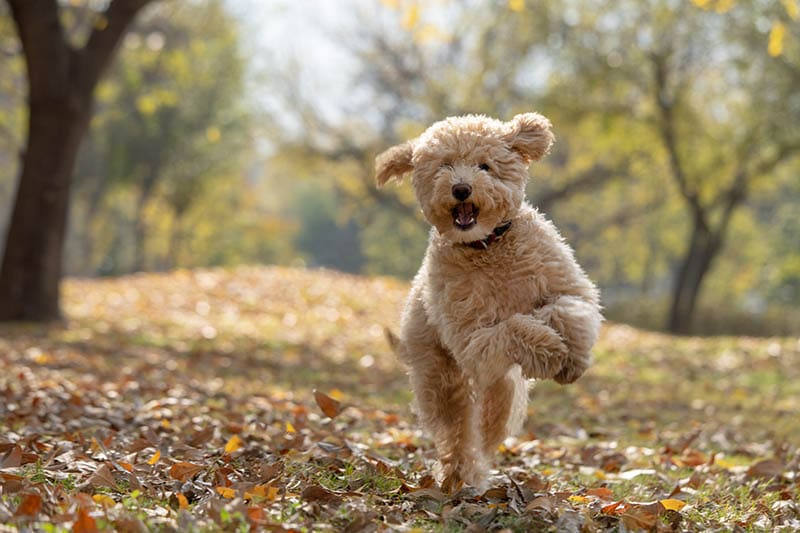
The 5 Tips for Introducing a Goldendoodle to a Cat
When introducing a Goldendoodle to a cat, it’s crucial to take things slowly and carefully. Here are some tips to ensure a smooth transition:
1. Create a safe space for your cat.
Set up a separate room or area where your cat can retreat if they feel threatened or overwhelmed by the dog. This space should have all the essentials, such as food, water, and a litter box.
2. Allow the pets to become familiar with each other’s scents.
Before the first face-to-face meeting, let the animals smell each other’s bedding or toys. This will help them become accustomed to each other’s scent and may make the introduction process smoother.
3. Supervise the initial meeting.
When introducing the pets, keep the Goldendoodle on a leash and maintain control of the situation. Allow the animals to approach each other slowly and calmly and be prepared to intervene if either pet shows signs of aggression or fear.

4. Reward positive behavior.
Praise and reward both pets when they interact calmly and peacefully. This will help reinforce positive associations and encourage them to get along.
5. Be patient.
It may take several weeks or even months for your pets to become comfortable with each other. Don’t rush the process and be prepared to give both animals time and space to adjust.
Potential Risks and Challenges
While Goldendoodles are generally friendly and low-aggression animals, it’s essential to remember that every pet is an individual with its personality. Some Goldendoodles may be more prone to chasing or rough play, which could stress your cat. Additionally, some cats may be more territorial and resistant to accepting a new animal in their home.
To minimize these risks, it’s essential to monitor your pets closely during the introduction process and intervene if necessary. If you’re concerned about your Goldendoodle’s behavior around your cat, consider seeking the advice of a professional dog trainer or animal behaviorist.
Understanding Your Goldendoodle’s Prey Drive
What Is Prey Drive?
Prey drive is an instinctive behavior in dogs, inherited from their wolf ancestors, which compels them to chase and capture smaller animals. While this trait was essential for survival in the wild, it can sometimes pose challenges when introducing a dog to a household with smaller pets, such as cats.
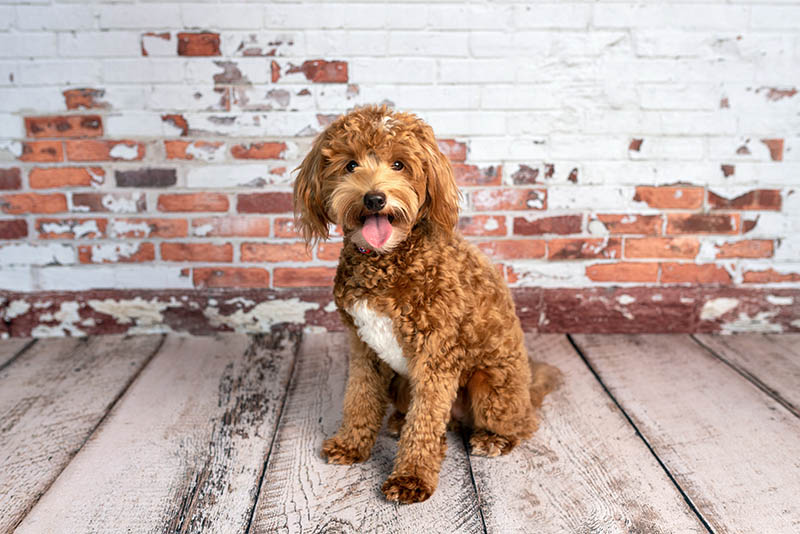
Factors That Affect Your Goldendoodle’s Prey Drive
Several factors can influence a Goldendoodle’s prey drive, including:
- Genetics: Some dogs may have a higher natural prey drive due to their breed or individual genetic makeup.
- Socialization: Early exposure to cats and other small animals can help reduce a dog’s prey drive by familiarizing them with these creatures as companions rather than prey.
- Training: Consistent training and reinforcement of appropriate behaviors can help manage a dog’s prey drive.
Tips for Managing Your Goldendoodle’s Prey Drive Around Cats
To manage your Goldendoodle’s prey drive and ensure a harmonious relationship with your cat, consider the following tips:
- Provide structured playtime and exercise for your Goldendoodle to channel their energy productively.
- Use positive reinforcement techniques to reward calm and non-aggressive behavior around your cat.
- Train your Goldendoodle to respond to commands, such as “leave it” or “stay,” to help maintain control during interactions with your cat.
 How to Create a Balanced Environment for Both Pets
How to Create a Balanced Environment for Both Pets
Establish Separate Spaces for Your Cat and Goldendoodle
To create a comfortable environment for both pets, designate separate areas where each can retreat for rest and relaxation. Ensure that your cat has access to elevated spots, such as cat trees or shelves, where they can observe the Goldendoodle from a safe distance.
Promote bonding between your Goldendoodle and cat by engaging them in shared activities, such as supervised playtime or joint training sessions. This will help them associate each other with positive experiences and strengthen their bond.
Monitor and Adjust Feeding Times and Locations
To prevent competition and potential conflicts, feed your pets separately and at different times or in separate areas of your home. Monitor their behavior during feeding and adjust as needed to ensure a peaceful mealtime.
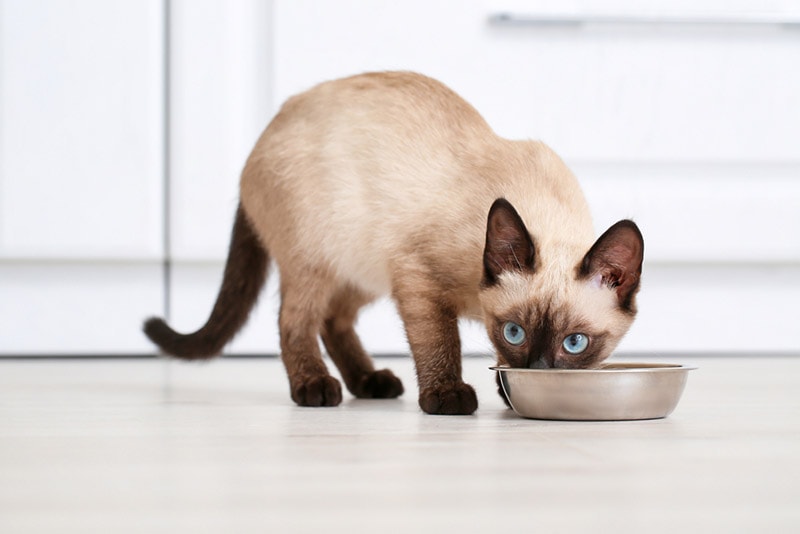
How to Address Potential Health Concerns
Keep Up With Regular Veterinary Check-ups for Both Pets
Regular veterinary check-ups are crucial to maintaining the health and well-being of both your Goldendoodle and cat. Be sure to schedule routine appointments for vaccinations, dental care, and overall wellness assessments.
Identify and Address Signs of Stress or Anxiety in Your Pets
Monitor your pets for signs of stress or anxiety, such as excessive grooming, hiding, or changes in appetite. If you notice any concerning behaviors, consult with your veterinarian or an animal behaviorist to identify the cause and develop a plan to address the issue.
Ensure Proper Grooming and Hygiene for Both Your Goldendoodle and Cat
Maintaining proper grooming and hygiene is essential for the health of both your pets. Regularly brush your Goldendoodle’s coat to prevent matting and trim their nails to avoid injury during play. For your cat, be sure to clean their litter box frequently and provide regular grooming to minimize hairballs and maintain a healthy coat.
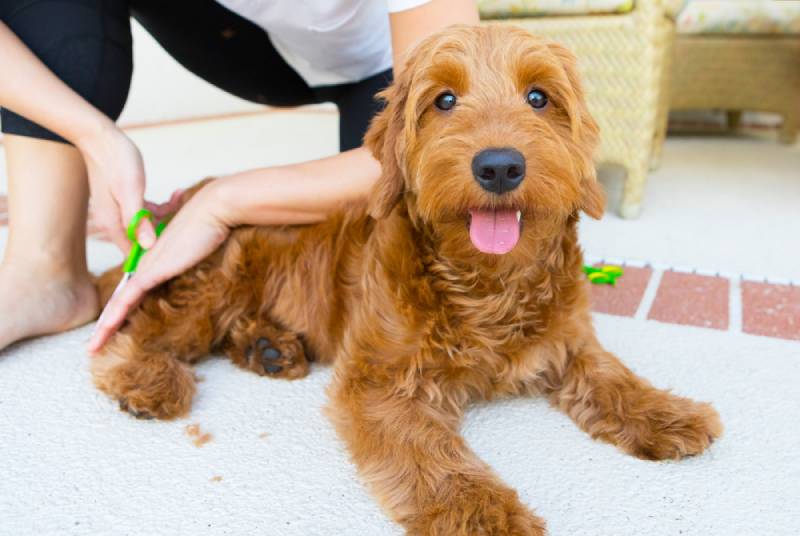
Conclusion
In general, Goldendoodles are known to be good with cats due to their friendly and low-aggression nature. However, it’s essential to take the necessary precautions and follow the tips provided in this article and by your veterinarian to ensure a smooth transition for both pets. With patience, proper introduction techniques, and ongoing supervision, your Goldendoodle and cat can become the best of friends and live harmoniously together in your home.
Featured Image Credit: Brooke Cagle, Unsplash

